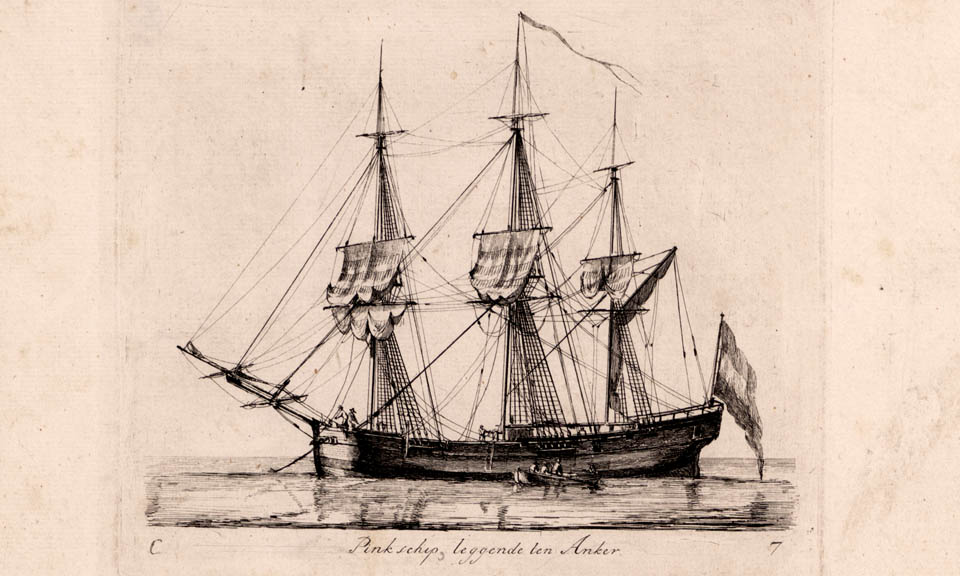The Story of the Charles
Afrique
1656
Nicolas Sansson (French, 1600–1667)
This map of Africa shows the European understanding of the continent's features in the middle of the seventeenth century.
David Rumsey Historical Map Collection.
Fighting between tribes of lower Ethiopia.
1686
Olfert Dapper (Dutch, 1636–1689)
Although it depicts a conflict among peoples in a region further to the east, this 17th-century print evokes the unrest in the BaKongo that resulted in tribal leaders selling prisoners of war.
De Agostini Editore.
Slaves packed below and on deck
1857
Unknown
Although no image of them exists, the enslaved men, women and children who survived the miseries of the trans-Atlantic crossing aboard the Charles also provided the physical labor to build Philipsburg Manor in the Hudson River Valley.
GRANGER / GRANGER — All rights reserved.
A pink laying at anchor
1789
Gerritt Groenewegen (Dutch, active late 18th century)
This ship, like the Charles, is the type known as a pink.
Collection Maritime Museum Sneek.
Sections of a slave ship.
1830
Unknown
Enslavers paid for modifications like intermediate decks aboard their ships to carry more African captives on trans-Atlantic crossings. This illustration appeared in an edition of Rev. Robert Walsh's account of conditions he witnessed aboard a slave ship in 1829.
CPA Media - Pictures from History / GRANGER — All rights reserved.
Loading plan for a small ship
18th c.
Unknown
In the late 16th and early 17th centuries, enslavers like Frederick Philipse used relatively small ships to carry human cargo. The crowded holds did not allow for privacy or comfort. The enslaved captives faced inhumane conditions and often, illness and death.
Alamy.
A Ship on the High Seas Caught by a Squall, also known as The Gust.
c. 1680
Willem van de Velde II (Dutch, 1633–1707)
The transatlantic crossing proved dangerous for many would-be colonists.
Rijksmuseum.
Africans thrown overboard from the slave ship Brazil
January 7, 1832
Unknown
This woodcut was originally published in The Liberator, an American abolitionist newspaper.Library of Congress.
The Western Ocean
1720
Unknown
This map of the Atlantic world from the atlas The English Pilot, the Fifth Book, shows navigation routes that linked Africa and Europe to the colonial Americas and the West Indies.
Mariner's Museum and Park.
A Representation of the Sugar-Cane and the Art of Making Sugar
1749
Unknown
Shown here are the labor-intensive steps needed to make molasses and sugar for export from the West Indies. Enslaved men carry cut sugar cane to the mill at upper right where it is broken down. Raw cane juice flows in channels to the boiling house at left where other enslaved men purify and thicken the juice through boiling in a series of vats. The reduced liquid is then set to harden in molds in a curing house.
Library of Congress, Prints and Photographs Division, Washington, D.C.
Adolph Philipse
c. 1695
Unknown
Adolph Philipse, merchant and politician, the owner of Philipsburg Manor.
Artist unknown / Museum of the City of New York. 33.45.
Aerial view of Philipsburg Manor
Philipsburg Manor, Sleepy Hollow, New York.
Historic Hudson Valley.
Produced by Historic Hudson Valley for People Not Property: Stories of Slavery in the Colonial North Interactive Documentary.
Copyright © 2019-2025 Historic Hudson Valley. All Rights Reserved.


